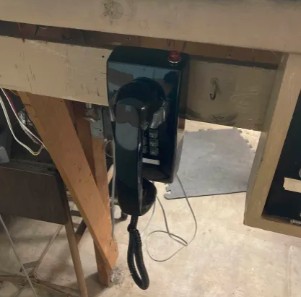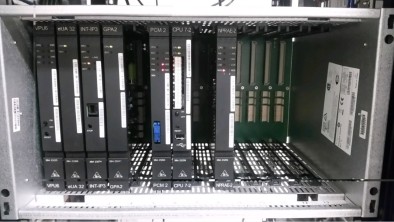The Randall Museum in San Francisco hosts a large HO-scale model railroad. Created by the Golden Gate Model Railroad Club starting in 1961, the layout was donated to the Museum in 2015. Since then I have started automatizing trains running on the layout. I am also the model railroad maintainer. This blog describes various updates on the Randall Museum Model Railroad and I maintain a separate tech blog for all my electronics & software not directly related to Randall.
2024-06-28 - Experimental: Intercom System
Category RandallOrion is working on a project favorite of his: creating an internal intercom system for the Randall Museum Model Railroad.
When it was part of the GGMRC, the layout used to have a few phones connected together to a single phone landline. This project is not linked to that at all -- the landline is long gone.
The root of the project is that we have 2 yards on opposite sides of the layout, separated by a big mountain in between. If someone wants to enter the mainline from the back, it would be nice if they could talk to the operators in the front to warn them they are going to enter the mainline. Something other than yelling across the room -- which doesn’t work on a loud busy Saturday morning anyway.
Thus the project is to create an internal-only “intercom” system with 3 phones connected to each other. Orion wants to use POTS wall phones, such as the one depicted on the left above, and use them unmodified.
To that order, he has installed some phone jacks and connected them all together.
My understanding is that he’s powering the phones by injecting 12 V DC on the line with a resistor. I need to double check and write the specs for this down here.
Overall the system now works -- both operators can pick up their phone and talk to each other.
What’s missing is making the phones ring. I suggested we simply simulate a ringer - an arduino with a speaker would be trivial to make that happen. Instead, Orion would like to stay true to his project and make the phones actually ring. Which would mean to introduce the proper ring signal on the phone line (90 V at 20 Hz). Challenge accepted? Sure. But that means what could have been accomplished in a few minutes is now going to take months whilst I research this. I did point out that was overdoing it, but then that’s his choice. As Voltaire said, le mieux est l'ennemi du bien.
https://pbxbook.com/other/trunks.html has some pretty good explanations of POTS signaling -- which is quite relevant because these terms have a railroad origin. I encourage you to read that site.
Unrelated anecdote: if you were in the US around 2005-2015, you would have heard of the Sprint Corporation -- they used to do landline phone and then cell phone before generating their own demise due to poor management. But more to the point is that SPRINT is a direct offset from the Southern Pacific attempt at using their track-side telegraph lines to compete with then-monopole ATT on long distance communications. See details on Wikipedia here.
As a joke, I suggested that if we’re going for a legacy system, what we need is to install a full PABX system. Now that would be uber overkill. But more importantly, it would highlight our very different position on what constitutes a “legacy” system:
|
|
For one thing, I don’t have nostalgia. As I often say, we used to do things in the past in a specific way not because it was better but simply because there was no other alternative. I grew up in an 8-bit computer world, and although I had a lot of fun back then, I don’t delve into such retro things. They were simply limited, not better. Sure, I maintain a model railroad that was built in the 60s-90s, and that means I’m very familiar with why it was built that way, but it also means I automate it using today’s electronics -- the latest automated trolley line is controlled by an ESP32 chatting over WiFi to an MQTT broker hosted on a Linux laptop running an automation controller written in Kotlin. There’s nothing legacy in here.



